Stauffer
- Peertone
Back
in September 2004 the following watch was for sale on a well known
internet auction site.

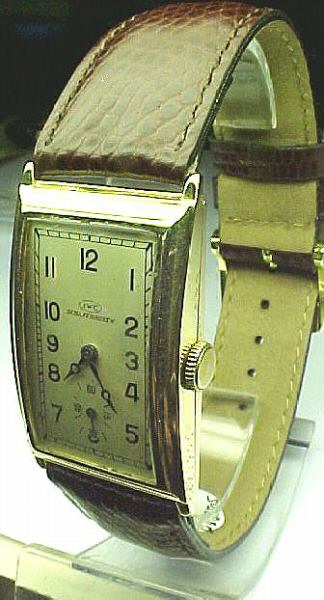
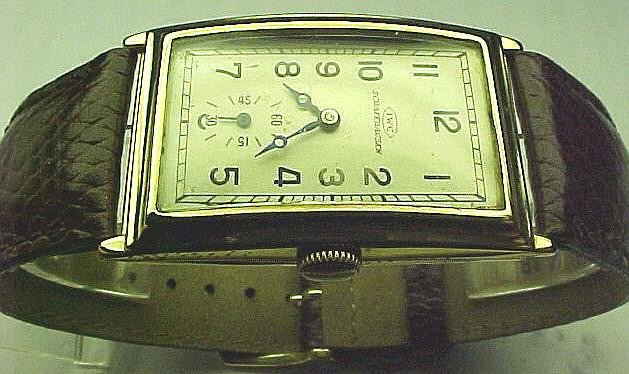
Movement
and case
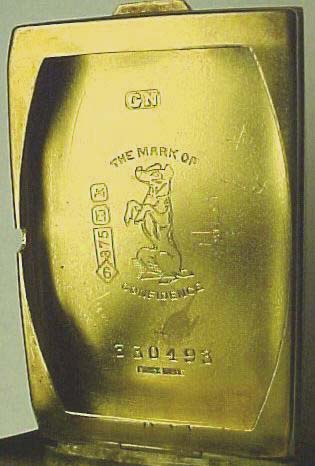
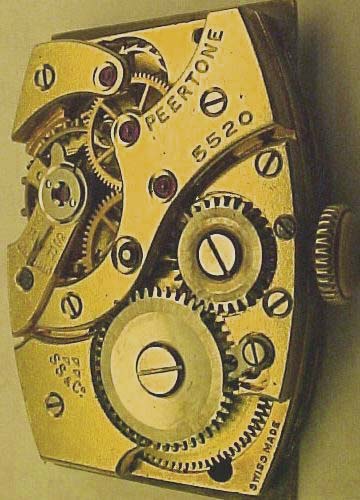
While the dial
is marked IWC, the case is not, and I was very curious about the
movement. SS & Co, the
three
triangles and Peertone were Stauffer trademarks according to Pritchard. The case is marked CN for Charles
Nicolet who owned Stauffer. We know about
the relationship between IWC and Stauffer with IWC watches distributed by Stauffer having
the movements marked Peerless.
The movement does show some similarity in
layout to the IWC Cal 87 movement.

The similarity on the left side of the movements is obvious but is it a
variant of the IWC Cal. 87 or something else?
A lengthy search for a movement with the same layout as the Peertone
yielded no results. It is often very difficult to identify a watch
movement with
certainty from the back as changes to the bridges
can
significantly alter the appearance of the movement.
In March 2008 I recieved an inquiry about a Peertone movement but
initially no
watch or case images were available. Importantly both the back and the
dial side of the movement were shown.
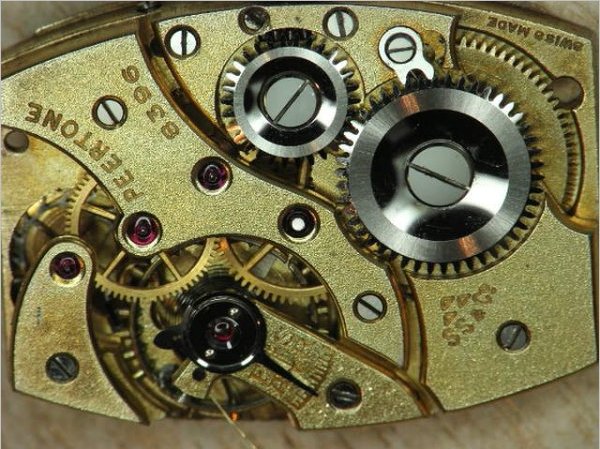
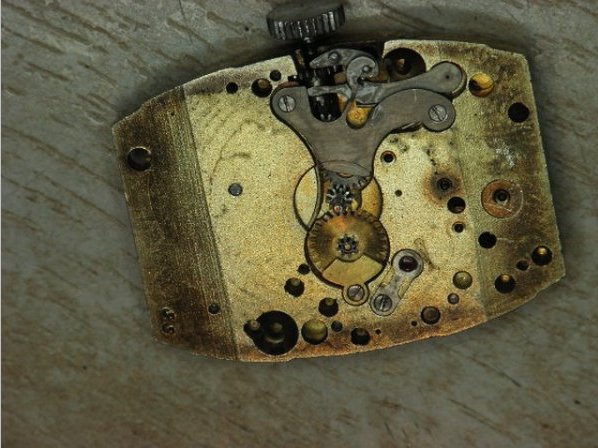
The movement can be identified from the setting parts for changing
the time on the watch and the following is from Paulson.
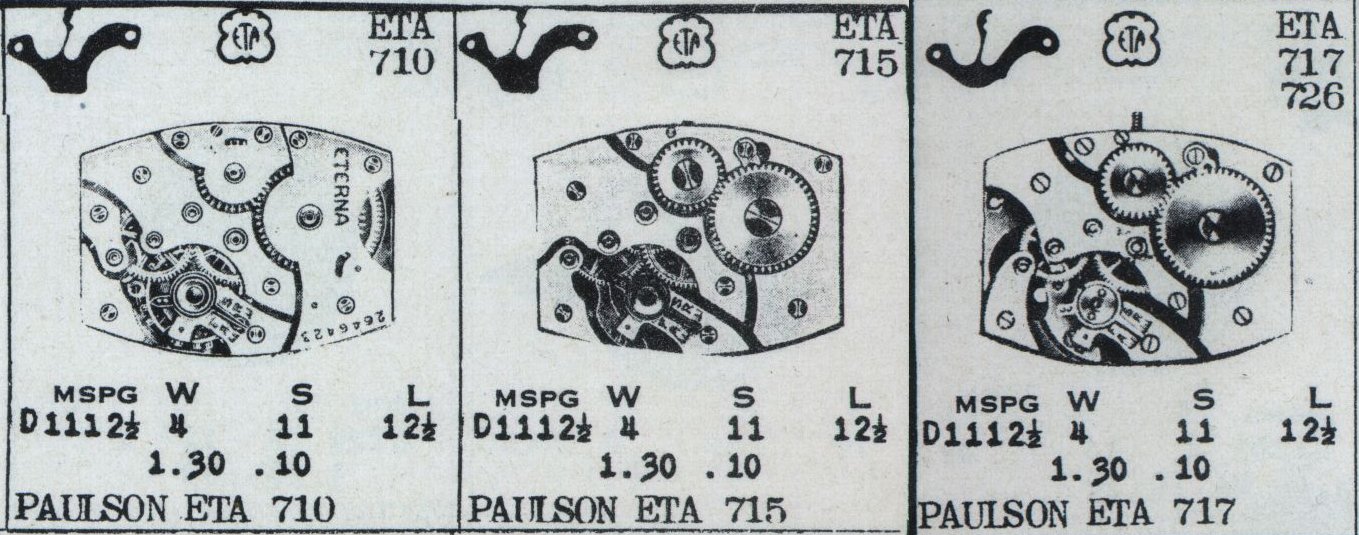
The set piece lever/spring (shown on the upper left of each
image) of the
Eterna/ETA 710 and the ETA 715 looks identical to the Peertone although
the movement plates look closer to the later ETA 717/726.
An image of the Eterna 710 movement (from Jobin 1936) is shown below.
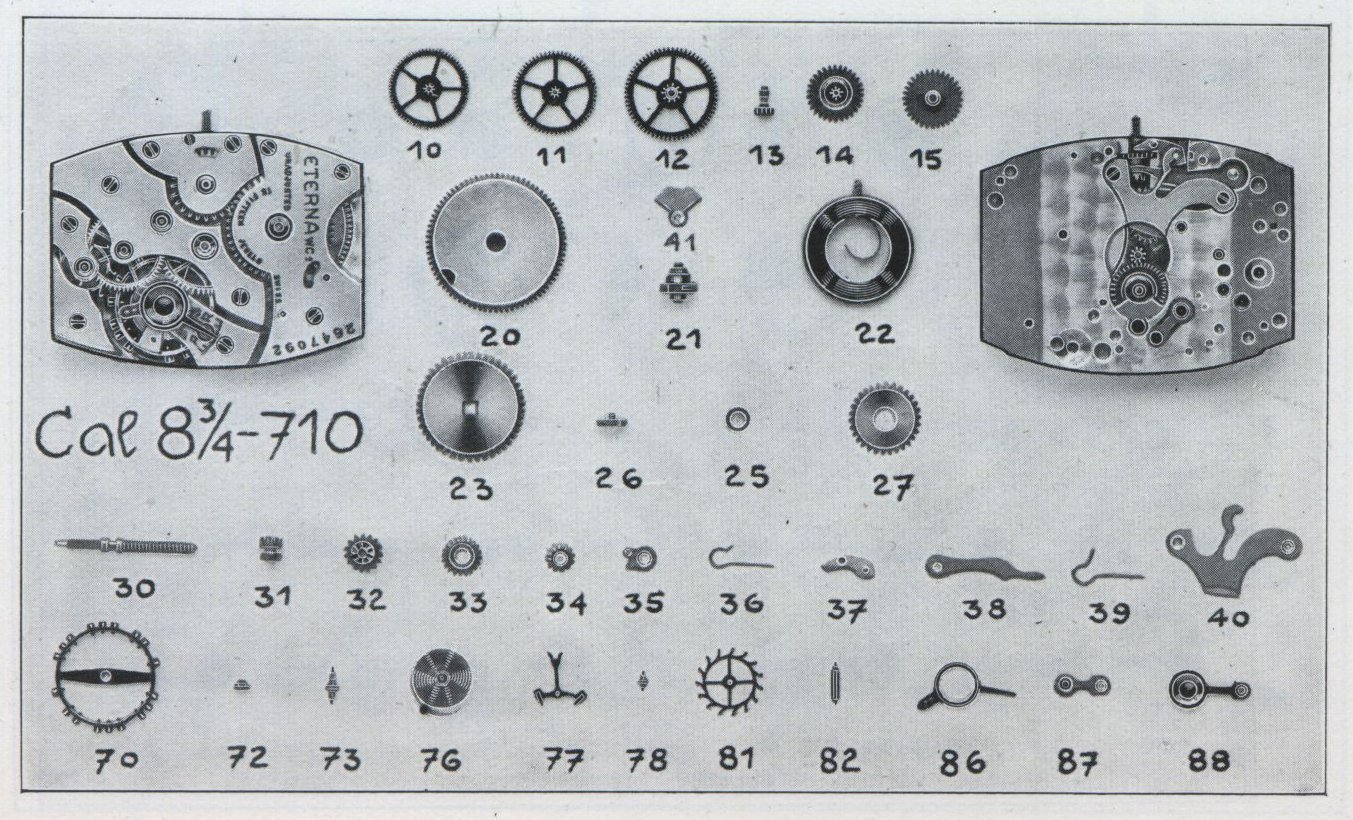
The dial side of the movement is all but identical to the Peertone and
I think the Peertone movement is based on either the Eterna 710 or the
ETA 710/715 (remember it was in the 1930's that the movement
division of
Eterna was seperated to form ETA). The setting parts are numbers 37 to
40 with the most identifable being number 40.
Is it coincidence the Stauffer/Peertone movement is found in the IWC
dialed watch displayed at the begining of this article or did Stauffer
use there own movements to
case up some watches with IWC dials or is the watch a far more recent
creation than the 1930's or1940's? At a guess, I think the dial of the
watch has been replaced by a watchmaker at some point although I do not
discount the possibility that the watch left Stauffer with the dial
shown. The "3" seems faded in all the images so I would be surprised if
the watch has been recently redialled.
In April 2008 I recieved a link to images of the case of the second
watch.

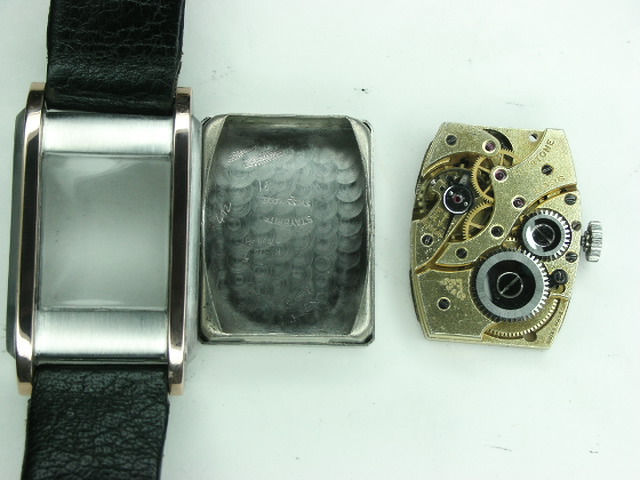
The dial of this watch does not appear to be marked in any way and the
case seems to read just "Staybrite Swiss Made" with no Stauffer
markings.
The IWC and Eterna movements can be seen in the following composite
image and it is very clear the setting parts of the two movements have
nothing in common.

While the dial of the first watch maybe by IWC, the cases and movements
shown have nothing to do with IWC and everything to do with Stauffer.
There is always a risk that a seller will try to pass the entire watch
off as an IWC by drawing a connection with Stauffer as an early IWC
distributor, so be careful when you buy or ask a question on the
IWC Collector's Forum (on the IWC site) if
unsure.
Greg Steer - January 2009
References:
International
Watch Company Fournitures No. 7, IWC, 1949
La
Classification Horlogere des calibres de montres et des fournitures
d'horlogerie suisse - 1936 Edition, Jobin, A.-F.
La
Classification Horlogere des calibres de montres et des fournitures
d'horlogerie suisse - 1938 Edition, Jobin, A.-F.
La
Classification Horlogere des calibres de montres et des fournitures
d'horlogerie suisse - 1949 Edition, Jobin, A.-F.
Paulson's Master Key Swiss Catalog, Henry Paulson & Co, 1950
Official Catalogue of Swiss Watch Repair Parts Vol 1 & Vol 2, Les
Fabricants Suisse d'Horlogerie, 1949
Swiss Timepiece Makers 1775-1975, Pritchard, K, 1997












